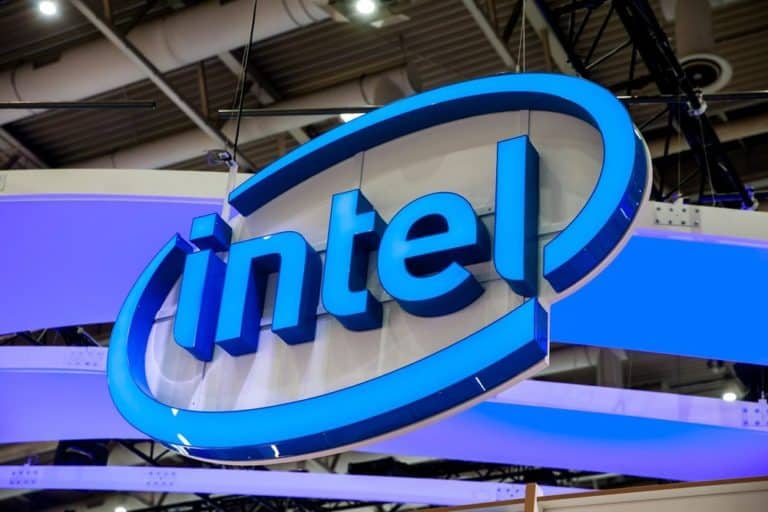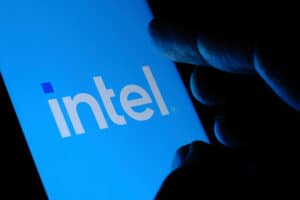Intel has been overtaken by several chip designers and chip manufacturers. The company was the absolute market leader with a lack of competition, and now it is lagging. Where did it go wrong? How could Intel make such a big mistake? And why does it take so long to recover? The corona crisis and the massive demand for chips softens the pain enormously for Intel, but in other market conditions, the company would have had a much bigger problem.
Intel is one of the largest chip manufacturers in the world. It is and will remain so. In total, there are only a dozen manufacturers that produce chips and a handful that actually makes processors. The other manufacturers focus on RAM or SSDs. In addition, there are dozens of companies that design chips and then have them produced by one of those manufacturers. These include GlobalFoundries, Intel, Samsung, SMIC and TSMC. Companies that have put pressure on Intel. We spoke with Maurits Tichelman, VP Sales & Marketing, general manager EMEA Territory at Intel, for this analysis.
ASML’s EUV technology
To produce chips, you need special machines. The only company in the world that can supply those machines is ASML from Veldhoven in the Netherlands. Originally a Dutch Philips invention. All manufacturers producing chips use ASML machines. What is essential is on what type of machine the production is done. In 2014 ASML started supplying so-called EUV machines, which stands for extreme ultraviolet. The machines use a laser with EUV light in the manufacturing process to make chips. The advantage of EUV is that a chip can be made even smaller and can contain more transistors. The machines use EUV light to be much more precise. In recent years, smaller chips with more transistors have resulted in more performance at lower energy consumption.
GlobalFoundries and SMIC do not use EUV. GlobalFoundries deliberately chose not to. This manufacturer focuses on other industries where you can still sell chips using a larger process, such as the automotive industry. Even RAM is still made on a larger process. SMIC would very much like to buy EUV machines, but that is not possible. SMIC is a Chinese company and, therefore, politically sensitive. ASML would like to supply SMIC, but the Dutch government does not allow this. ASML does not get an export licence for EUV machines to China. TSMC and Samsung are absolute market leaders in EUV. Of the 100 EUV machines that ASML has delivered, almost all are at these two parties. TSMC has more than half of the EUV machines, according to several sources.
Intel does not have EUV either, at least not yet
What many people don’t know is that Intel also has no EUV machines. At least, not in production. Next year, in 2022, the production of the first Intel chips with EUV technology should start after the summer. Tichelman said that Intel’s first EUV chips are intended for the data center and desktop market. These chips will then become available in 2023. Intel is probably having the EUV machines installed, configured and calibrated at this moment. Based on our research, this takes about six months on average. After that, production has to start, and it will take a year for the chips to become available. Intel needs EUV machines to compete. That is why the company is now being beaten.
How is it possible that Intel does not have EUV machines?
ASML has achieved a world-class performance with its EUV machines. However, this did not happen by itself. The development of these EUV machines also cost ASML a lot of effort. The introduction of EUV was several times postponed. It also took a lot of time to get the machines working optimally. ASML finally delivered the first machines to customers in 2014, but it was not until 2018 that the first EUV chips appeared on the market. Intel decided not to participate in EUV. Intel did not see the benefits of EUV. Or, as Tichelman puts it, “We were conservative at Intel, we didn’t think EUV was ideal. We just didn’t see the breakthrough of EUV. Intel had developments in the lab that we believed in more.”
We were conservative at Intel, we didn’t think EUV was ideal. We just didn’t see the breakthrough of EUV.
Of course, this was at a time when chip developments for EUV had yet to begin. This was also the moment when Intel made a major strategic mistake. Perhaps the biggest in the company’s history. Ultimately, Intel was partly right because it took years before the first EUV chips appeared on the market. Samsung and TSMC were convinced and ordered many EUV machines from ASML.
Since the first EUV chips appeared on the market in 2018, Intel has had to watch as it has been technologically overtaken. Companies such as Amazon Web Services, AMD, Huawei, Nvidia, Samsung and recently Apple have all introduced chips to the market that are more powerful than Intel’s and consume less energy. Also, the cost of the chips is often much lower than the Intel processors. Intel definitely feels the pressure of the competition now. Intel did change its mind and bought EUV machines to start producing EUV chips as well. When Intel decided to use EUV after all is unknown. The company does not want to share that, but it undoubtedly took more time than desirable. The order books at ASML for EUV have been well filled for years.
Meanwhile, Intel has new leadership in the form of CEO Pat Gelsinger. He must get the company back on track. Tichelman told us that Gelsinger’s goal is to be “on-par” again by 2023, which means equal to the competition. By 2025, Intel must again be the undisputed technology leader in the chip industry.
Damage remains limited due to corona and chip shortage
Because Intel is so late with EUV, it is missing out on a lot of revenue. In the data center, AMD is making solid advances. Cloudflare recently announced equipping its new server farm entirely with AMD chips because these are cheaper and consume less power. The energy price and the climate effect, like global warming, are decisive in this respect.
At AWS, they have been working for several years to expand their ARM chip portfolio to power VM’s at the expense of Intel. Amazon has its chip division for designing chips, while TSMC produces them. The chips of AWS are ARM-based. On the scale on which AWS operates, developing ARM chips saves the company a lot of money compared to purchasing Intel chips. In addition, lower energy consumption also plays a significant role. The AWS Graviton chips are cheaper, more powerful for the customer and use less energy. AWS has told us that it wants to offer its customers a choice and will certainly not stop with Intel chips.
In addition to the data center, Apple has also dealt Intel a considerable blow. Apple is in the process of providing all iMacs, MacBooks, and Mac Minis with their own processors. Apple has the so-called M-series processors. These are ARM-based chips, which can also be found in all smartphones and tablets, including iPhones and iPads. Eventually, Apple will no longer sell Intel-based Macs. The market share of Apple sales in the PC market is somewhere between 8 and 12 percent. A bit depending on what you report you use, which is a big loss for Intel.
Nevertheless, the loss is still limited, mainly due to the chip shortage. With a severe shortage of new chips, all factories are running at 100 percent, and there is little room to manufacture additional chips and take much market share from Intel. AMD has a much better offering than Intel with its current product portfolio, but ramping up production is extremely difficult, as AMD is dependent on TSMC and Samsung for production.
There are also rumours that more manufacturers are following Apple’s lead in designing their own chips for PCs. However, it is still too early for that; Windows 11 should offer good support for ARM chips, but it still has to prove itself. Moreover, such a step is difficult when the production of chips is virtually impossible. Parties mentioned for making their chips are Google, Microsoft, Qualcomm, Nvidia and Samsung.
Hijacking production capacity from TSMC
An Intel processor powers most PCs sold today. This is not going to change any time soon. AMD cannot scale up production fast enough, and Windows 11 has yet to prove itself for ARM chips. Intel, however, has also reportedly made an intelligent move to keep the competition at bay. It has allegedly bought up almost all of TSMC’s 3nm production capacity for the coming year. Intel would like to produce a new GPU there, but possibly also CPUs. The reason for Intel to outsource this is partly because it has no or insufficient EUV machines itself, but also to ensure that the competition cannot increase its production.
Intel and TSMC have not yet confirmed that the companies have struck a major production deal. If it is true, Intel is buying market share simply by hijacking the available production capacity. However, this is a short-term solution. In the long run, Intel must do more.
Manufacturing for everyone
In the long run, Intel will consist of two parts. On the one hand, the Design Division, where the new Intel Xeon and Intel Core i3/i5/i7/i9 processors are designed and marketed. In addition, there will be a complete Fab division. This division of factories around the world can do chip production and chip packaging. Gelsinger announced that Intel would also produce chips for third parties, thus competing directly with TSMC.
Intel wants to become the world’s largest manufacturer of chips again. In the meantime, two new factories are being built in the United States and, where possible, expansion is underway. In Europe, Intel is still looking for a location for a new factory. Intel has told Techzine that it has received 70 proposals from Europe for new chip factory locations. By far, most proposals have come from Germany. At this moment, there are 10 locations left, and from these will be chosen. The chance that the factory will be located in Germany is reasonably high. In addition to European subsidies, the German government also wanted to set aside more than a billion euros for bringing in a new chip factory. In the Netherlands, ‘only’ €300 million was reportedly available.
Tichelman explained that Intel wants to do all or part of the production for companies, but chip designers will soon be able to use Intel’s designs. Suppose AWS designs a chip that is specifically aimed at running database workloads, but which must also have a CPU, then AWS could stick the ARM chip for databases on an Intel Xeon chip and have them packaged together into one chip. This can also be done with CPUs and GPUs or with AI chips. In the end, it does not matter what kind of chip it is. Intel can manufacture it all and deliver it completely. Intel has already made the first deals for this. AWS is going to house part of its production at Intel, so we understand from Tichelman. The most important thing, in our opinion, is that more companies will be able to design and use x86 chips.
A word about 2025
Of course, in our conversation with Tichelman, we talked extensively about 2025. Intel wants to be the absolute leader in the chip market by 2025 again. That sounds quite ambitious, especially when you see that TSMC, for example, already has more than 50 EUV machines in production, and Intel is just starting. Intel can never catch up with that capacity and efficiency. Certainly not when you consider that ASML can supply a maximum of 25 to 30 machines per year. Both TSMC and Samsung still have orders open for new machines.
Tichelman says that Intel’s hopes are on developments in the Intel labs. There are a few features on the way that have been in development for more than 10 years, giving Intel chips a big boost. One of those innovations is RibbonFET. It is a new transistor architecture in which the transistors can become even smaller and can switch faster. Intel wants to start using this architecture in combination with a 2nm process from 2024 onwards. Intel also wants to power these chips from the bottom, a technique they call PowerVia.
Tichelman states that this will make a big difference for Intel and make the company a true leader again. We asked Tichelman how Intel could be so convinced. 2025 is still some time away, and the competition will not sit still either. Tichelman revealed that the people at Intel are convinced of their new technology.
In the meantime, we understand that IBM and Samsung have already designed chips with a similar transistor architecture. The market calls this gate-all-around transistor (GAA). Next year, Samsung wants to start using this in combination with 3nm chips, while TSMC intends to begin working with GAA in 2nm chips (the same format as Intel) from 2023. In any case, we are not convinced that Intel will overtake the other parties with this new technology.
Intel’s conviction may also come from something else. ASML expects to have the first new High NA EUV machines ready by the end of 2023 or early 2024. High NA EUV will be the successor to the EUV machines. It is possible that Intel is not being too conservative this time but has invested heavily to get the first machines. By doing this, it could take the lead in the chip market.
Conclusion
ASML is the only company that can supply high-quality machines to produce chips. That is not going to change in the coming years. If ASML comes up with new technology, then you can’t say no as a chip manufacturer. You have to participate because if you miss out, you may suffer for years to come.
It is precisely what has happened to Intel and, through some reorganisation, strategy changes and other management, the company hopes to get back on its feet and end the suffering. The chip shortage limits the damage. All chip designers at AMD, Apple, Samsung, Nvidia and Qualcomm should take it as a big compliment that they have broken Intel’s hegemony. For now, we can’t do anything but wait to see if Intel will recover in the coming years or if other chip manufacturers will continue to benefit.
Tip: Why the acquisition of ARM by Nvidia should be prohibited



















